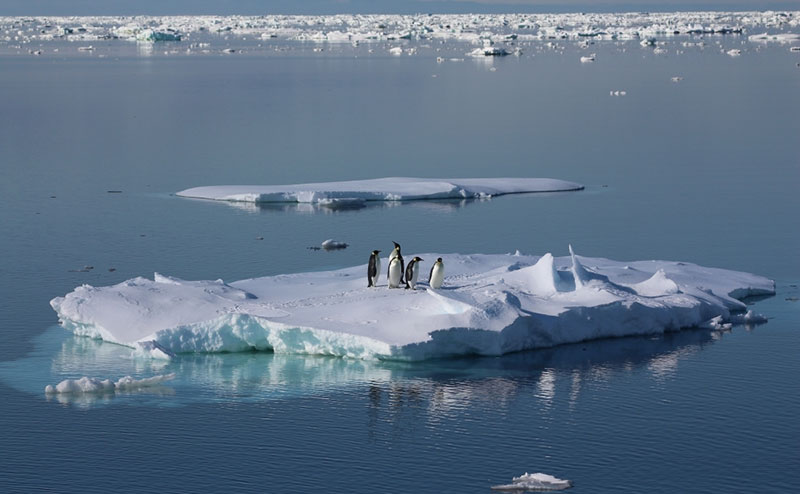Questo sito web utilizza i cookie per potervi offrire la migliore esperienza d'uso possibile. Le informazioni contenute nei cookie vengono memorizzate nel browser dell'utente e svolgono funzioni quali il riconoscimento dell'utente quando torna sul nostro sito web e l'aiuto al nostro team per capire quali sezioni del sito web sono più interessanti e utili per l'utente.
The topic “LC-CLA-08-2018” SO-CHIC responded to is part of the European Commission’s societal challenge 5 focusing on Climate action, environment, resource efficiency and raw materials. This specific topic aims at a better understanding of the key processes controlling the climate-Earth system to improve climate projections, reduce uncertainty in climate sensitivity calculations, enhance understanding of frequency and strength of extreme weather events, and assess more accurately the impacts of climate change related to the proximity, rate, reversibility and tipping points of abrupt climate change, and the identification of safe operating spaces.
SO-CHIC is expected to have major quantifiable impacts on climate science, European research capacity, governance and value creation through innovation and services, and towards the United Nations Sustainable Development Goals (SDGs).

Supporting major international scientific assessments of the climate state such as the IPCC
Oceans dominate anthropogenic heat and carbon storage in the climate system, which in turn has a dramatic impact on human activities (through e.g. sea level rise through thermal expansion, increased ocean acidity). The Southern Ocean takes a disproportionate part in this process, as about 75% of ocean heat uptake and more than 60% of ocean carbon uptake happens there. Furthermore, the uncertainty in the estimate of the carbon sink by the oceans remains the main source of uncertainty of the global carbon budget, especially at the decadal time-scale, and the uncertainties come mainly from variability in the Southern Ocean circulation (Le Quéré et al., 2007, 2009, 2017; Landschützer et al., 2015).
Thus, accurate knowledge of fluxes and storage of hea and carbon in the ocean is vital for the scientific assessment of climate change. Because of the general limitations of the current observing system, the largest uncertainties in the heat and carbon budget comes from the Southern Ocean. SO-CHIC will make direct contributions to several key component of the IPCC reports
Increase confidence in climate change projections
Government departments, local agencies, advisory bodies and businesses and third sector organisations (e.g. infrastructure, agriculture, health, international development, etc.) use climate projections to develop environmental policy advice, actions on climate risks, and mitigation and adaptation strategies at national, European and international scales. Coupled climate models, which are central to these decadal climate predictions, have poor representations of the Southern Ocean, constituting one of the main sources of uncertainties.


Providing added value to decision and policy makers
SO-CHIC directly addresses these issues by first increasing the density of data acquisition in the Southern Ocean through the deployment of a network of ship-based and autonomous platforms (WP1-4).
The SOCHIC effort will follow the high-quality standards of Marine Strategy Framework Directive (MSFD), the EU Water Framework Directive (WFD) and EU standards for monitoring the European Seas and Oceans (which promote the adoption of innovative networks of multipurpose wireless sensors that are accessible remotely by web-based interfaces and that are compliant with major international standards). Fitness for use and the need to develop indicators that can define gaps in the observing systems will be addressed.
Sustaining Europe's leadership in climate science
Europe’s leadership in climate science is sustained by a rich network of academic and private sector parties. Providing easy and reliable access to the most up-to-date, high-quality data products is critical so that these organisations can maintain their cutting-edge activities (research, technological innovation, adaptation, etc.). To achieve this aim requires to transform data into products and services calibrated to the need of end-users (fitness for use) and to assess the observing systems on the base of the fitness for use.
SO-CHIC will implement a data management and dissemination plan (WP7, 8) to maximise access and exploitation of data acquired (WP1-4) for a variety of end users (e.g. incorporate them into forecast models, development of merged in-situ-Earth observations satellite products and synthesis). Measurable actions to be taken by SO-CHIC will include: (1) develop pathways to achieve the “fitness for use” of the data collected in WP1-4; (2) develop the indicators for gaps in the observing systems that will guide the design of future EU and international observing system (3) supervise uptake of new in-situ data within Mercator reanalysis/forecast; (4) contribute to Ocean Monitoring Indicators and Ocean State Report.

